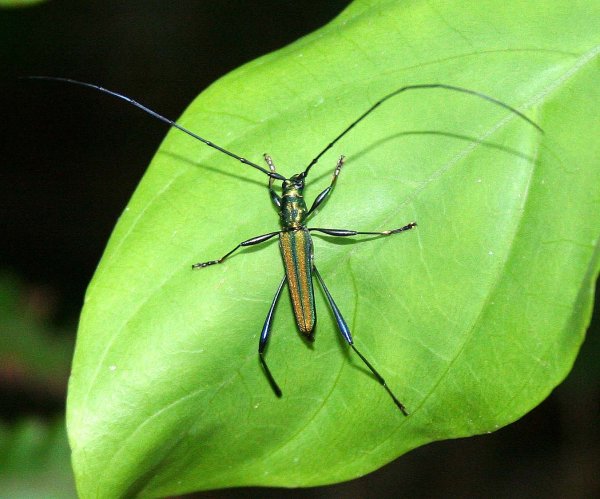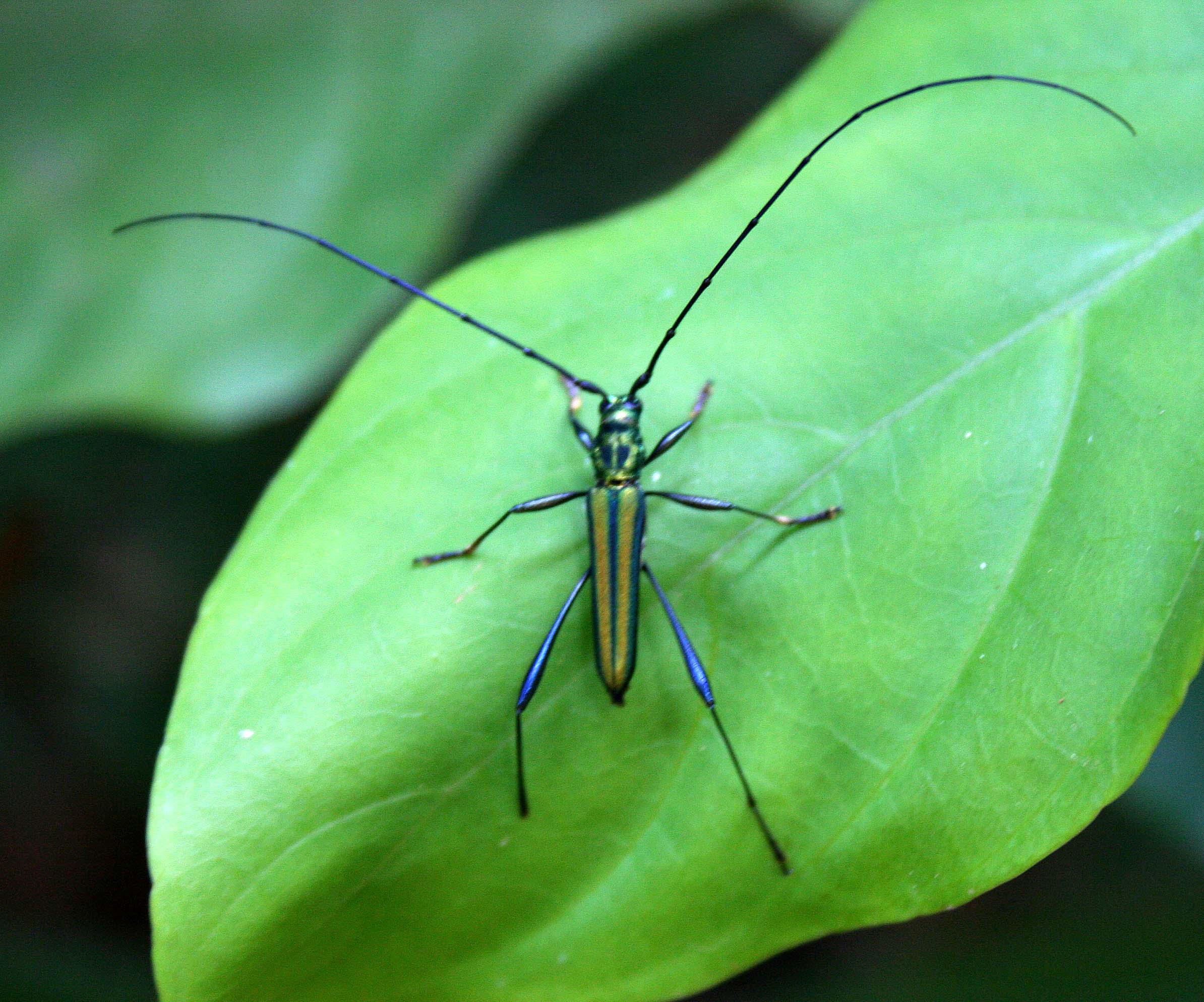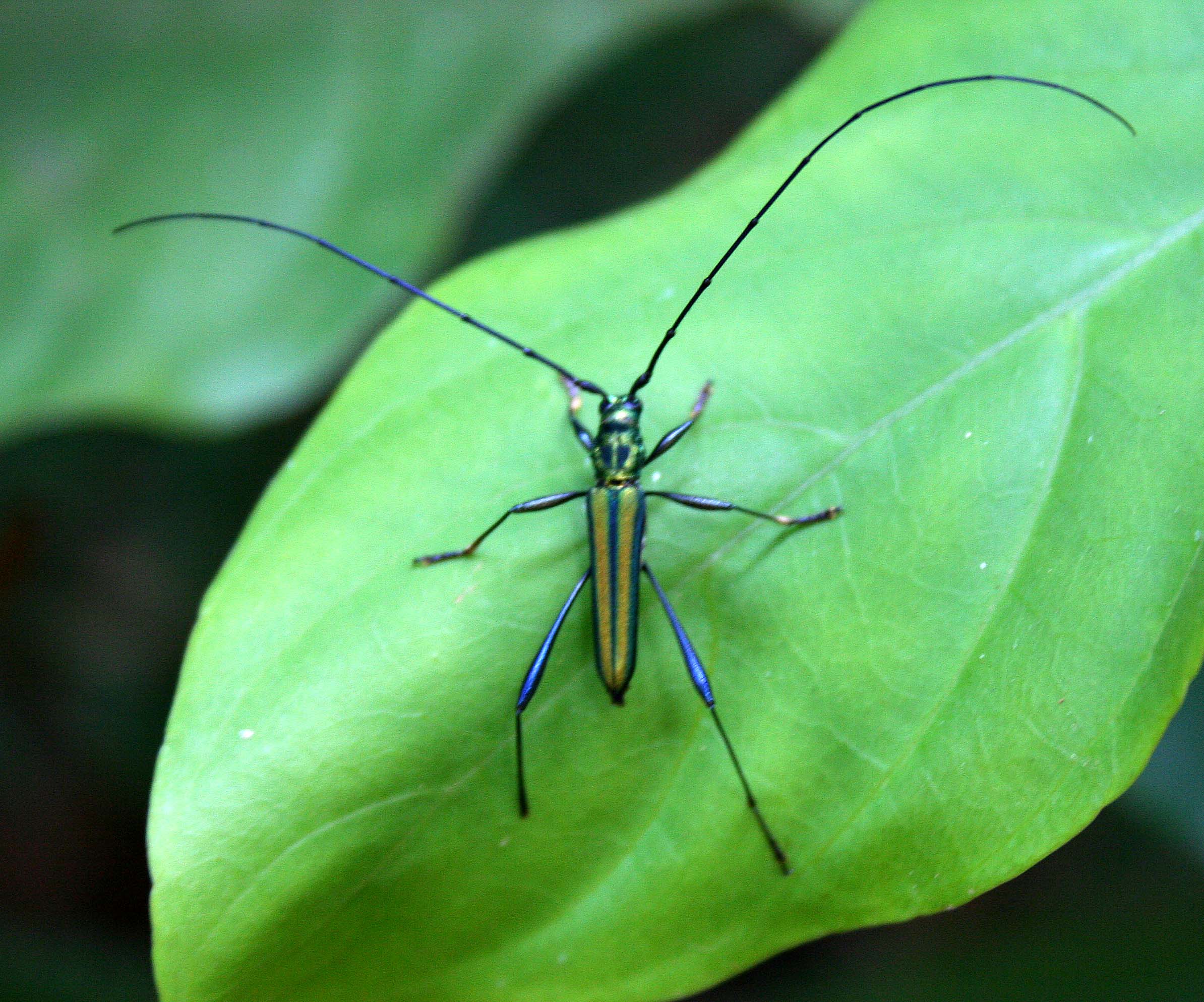| T O P I C R E V I E W |
| Les |
Posted - 11/10/2010 : 09:40:35

I photographed this at home on Koh Samui, Thailand.
It has tentatively been identified as Chloridolum thompsoni. However, as this species has not been recorded before from Thailand, could you confirm?
Thank
you |
| 5 L A T E S T R E P L I E S (Newest First) |
| Les |
Posted - 15/10/2010 : 02:36:52
Thank you very much.
It was the yellow ground colour that made me originally think it may not be alcmene, so it is just a well marked specimen. Thanks again. |
| Francesco |
Posted - 14/10/2010 : 08:31:27
Very well: this photo is maybe less sharp, but the pronotal character is well visible.
So, it has two discal spots. Though the ground body colour seems to be too yellow, it should be a male of Chloridolum alcmene Thomson, 1865.
This species is known from Andaman, India, Myanmar, Thailand and Vietnam. |
| Les |
Posted - 14/10/2010 : 02:27:19

Second full size photo herewith. I hope these help.
Thanks again. |
| Les |
Posted - 14/10/2010 : 02:23:45

Thank you for your reply. I recall that the specimen was c22mm in length. I do not collect, only photograph, as beetles are not my area of expertise.
I am attaching full size photo (much larger), as I have second one which shows the dorsal pronutum markings better.
A couple of things about your site. It appears I can only post one photo at a time, so the second full size photo will follow. Also, my email address is too long for your site! |
| Francesco |
Posted - 13/10/2010 : 21:19:42
Dear Les, Chloridolum is right, but this group is very difficult without a close examination.
Fist of all, what is the body size of this beetle?
Secondly, I do not understand the sculpture of the pronotum: does it have one black spot on the disc or not? Is the surface irregularly or regularly wrinkled?
Did you collected this specimen? Since the examination of a prepared beetles might help to identify. |
|
|


